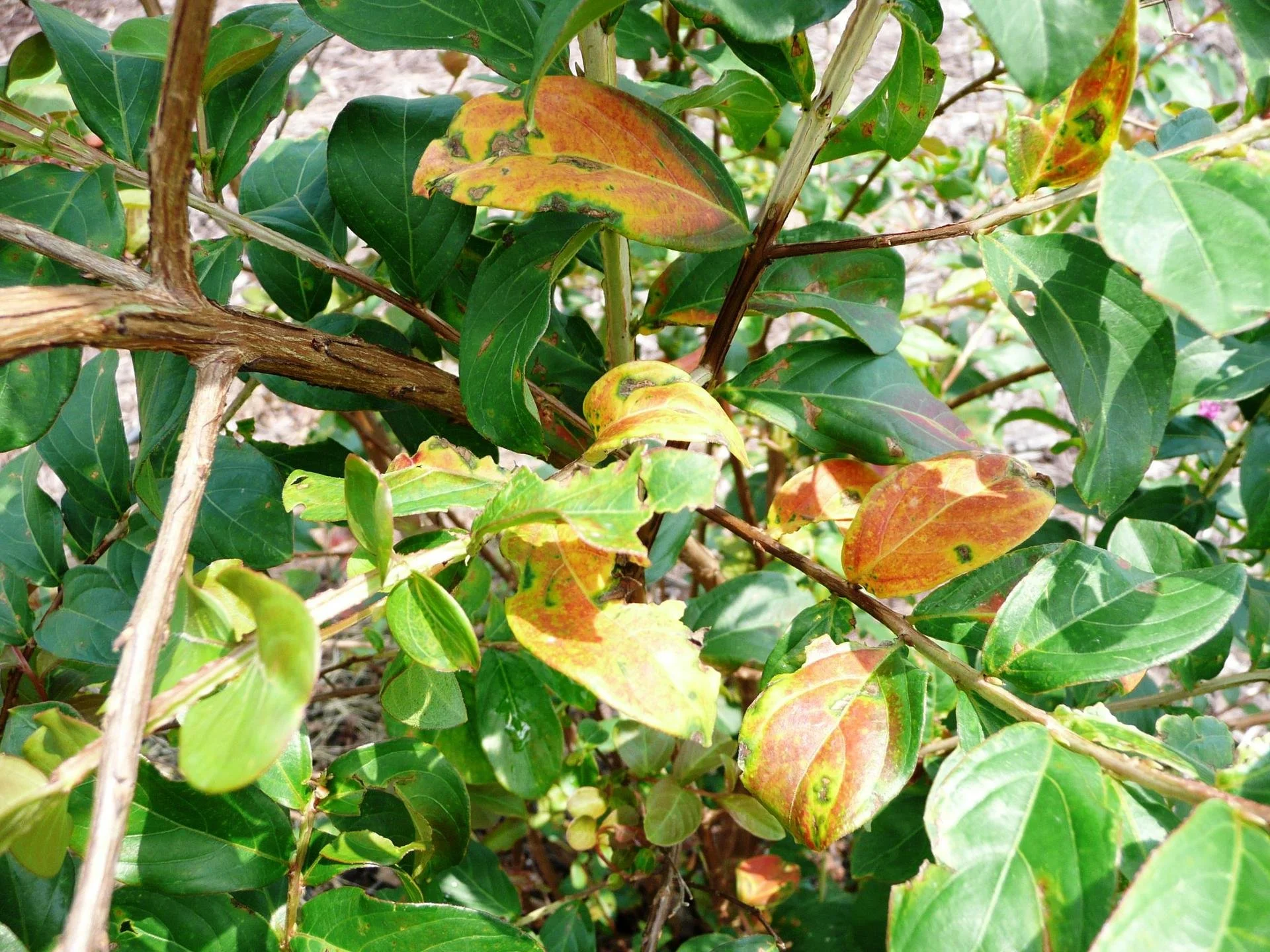Crape Myrtles 101
Crape Myrtle Bark Scale
Crape myrtle bark scale (Acanthococcus lagerstroemiae), an invasive pest from Asia, was first detected in Texas in 2004 and has since spread across the southern U.S.
This waxy, honeydew-exuding bark scale appears as white or gray encrustations on stems, large twigs, and trunks, particularly in branch crotches and pruning sites. It feeds beneath the crape myrtle’s exfoliating bark, making control challenging.
Excessive honeydew secretion leads to black sooty mold growth on leaves, branches, and trunks, which affects the plant’s health and appearance.
Cercospora Leaf Spot
If your crape myrtle's leaves develop small spots, turn red, and drop prematurely in summer, it’s likely Cercospora leaf spot, especially in hot, rainy conditions. While some varieties are more resistant, all can be affected during humid summers.
This fungal disease thrives when water sits on leaves from rain or overhead irrigation. To minimize risk, water in the morning to allow foliage to dry.
Though rarely fatal, severe spotting and early leaf drop can weaken the plant and reduce its vigor for the season.
Powdery Mildew
Powdery mildew is a plant disease caused by a fungus. This is one of the most common diseases contracted by crepe myrtle trees. It contains patches of powdery white or gray growths that tend to cover the leaves and sometimes the branches.
Crape Myrtles planted in shady areas instead of sunny locations are especially susceptible to contracting this disease. Environmental conditions such as high humidity also favor powdery mildew growth.
The best way to reduce powdery mildew is to increase sunlight by trimming surrounding trees and/or pruning the crape myrtle to thin the canopy and improve airflow.



